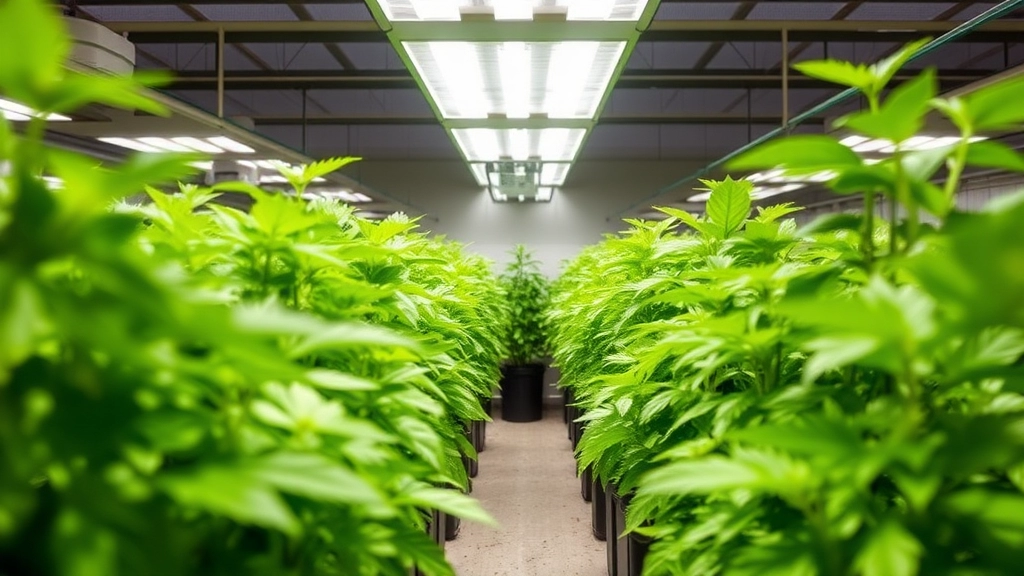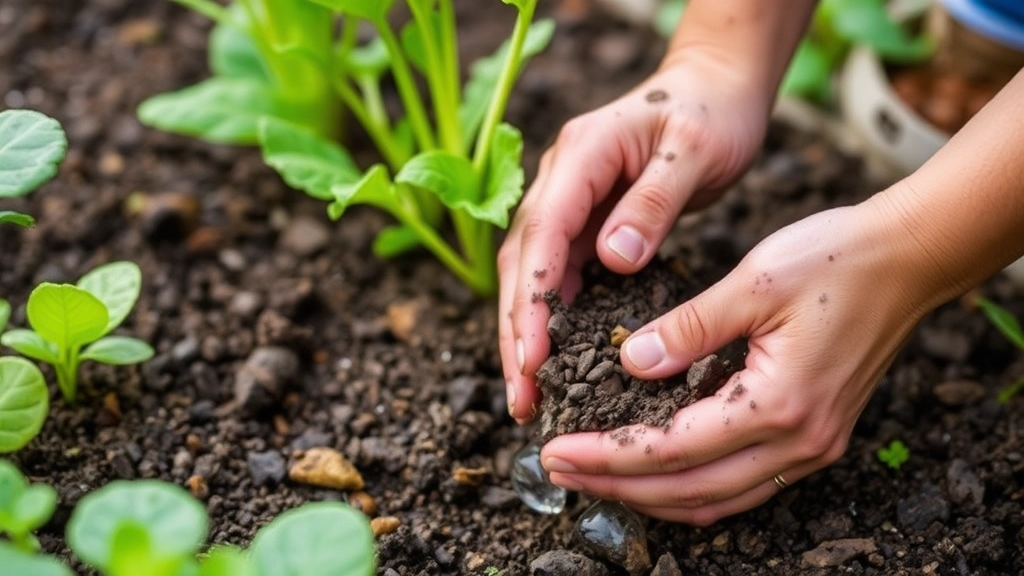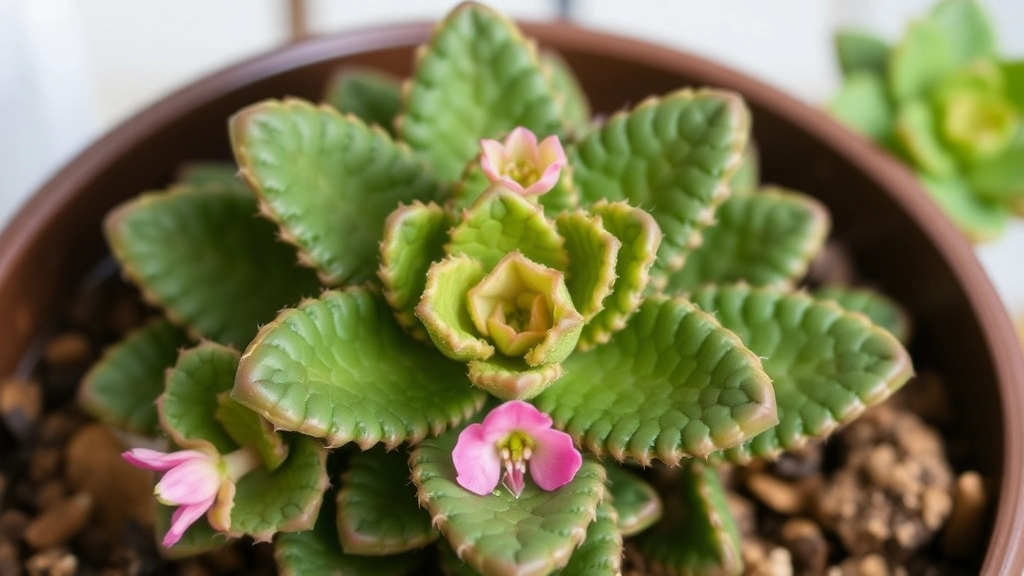Mastering the Care of Your Kalanchoe Flapjack Paddle Plant
Looking to master the care of your Kalanchoe Flapjack Paddle Plant? You’re in the right place. This popular succulent, known for its striking, paddle-shaped leaves, thrives with the right care. We’ll dive into everything you need to know about its ideal growing conditions, from light and temperature needs to the best soil types and watering techniques.
Understanding how to propagate the Kalanchoe Flapjack Paddle Plant and troubleshoot common issues is crucial for both beginners and experienced gardeners. Stick around for easy-to-follow advice that will keep your plant healthy and vibrant, ensuring it becomes a stunning addition to your indoor or outdoor garden.
Are you struggling to keep your Flapjack Paddle Plant thriving? You’re not alone. Many plant enthusiasts face challenges when trying to create the perfect environment for this unique succulent.
The Kalanchoe Flapjack, known for its distinctive paddle-shaped leaves, flourishes in specific conditions. Understanding these requirements can make all the difference in your plant’s health and vibrancy.
## Key Growing Conditions
To ensure your Flapjack Paddle Plant thrives, consider the following ideal conditions:
– **Light**: This succulent loves bright, indirect sunlight. A south-facing window is perfect. Too much direct sunlight can scorch its leaves, while too little light can stunt its growth.
– **Temperature**: The Flapjack prefers warm temperatures, ideally between 20°C to 30°C (68°F to 86°F). It can tolerate cooler temperatures but should be protected from frost.
– **Humidity**: Low humidity is ideal. This plant is native to arid regions, so it thrives in dry conditions.
– **Airflow**: Good air circulation is essential. Ensure your plant isn’t crowded by other plants to prevent fungal issues.
By creating these ideal growing conditions, you set the stage for a healthy, flourishing Flapjack Paddle Plant. For more detailed care tips, check out our [Kalanchoe Flapjack Paddle Plant Care Guide](https://planthq.org/kalanchoe-flapjack-paddle-plant-care-guide/) and learn how to [grow and care for Kalanchoe Red Bells](https://planthq.org/how-to-grow-and-care-for-kalanchoe-red-bells/) to add more vibrant succulents to your collection.
Light and Temperature Requirements for Healthy Growth

So, you’ve got your Flapjack Paddle Plant, and you’re wondering how to keep it thriving?
Light Needs
First off, let’s talk about light. This plant loves bright, indirect sunlight.
- Ideal Spot: A south-facing window is perfect.
- Too Much Sun: If you notice the leaves getting crispy or sunburnt, it’s time to move it back a bit.
- Too Little Light: If the leaves start stretching out, your plant is asking for more light.
Temperature Preferences
Now, onto temperature. Kalanchoe Flapjacks are pretty chill but have their limits.
- Optimal Range: They thrive between 20°C to 25°C (68°F to 77°F).
- Cold Tolerance: Anything below 10°C (50°F) can stress them out.
- Heat Stress: If it gets too hot, ensure good airflow to keep them cool.
Best Soil Types and Drainage Solutions
When it comes to the Kalanchoe Flapjack, selecting the right soil is crucial for its health and vitality.
Many plant enthusiasts often worry about choosing the ideal soil mix that provides both nutrients and drainage.
Ideal Soil Composition
For the Flapjack Paddle Plant, a well-draining soil mix is essential. Here are the best options:
- Cactus Mix: Specifically formulated for succulents, this mix offers excellent drainage.
- Perlite or Pumice: Adding these materials to your soil can enhance aeration and drainage.
- Coconut Coir: This organic material retains some moisture while still allowing excess water to escape.
Drainage Solutions
Even with the right soil, drainage is paramount to prevent root rot. Consider the following tips:
- Choose the Right Pot: Opt for pots with drainage holes at the bottom to allow excess water to escape.
- Layering: Place a layer of gravel or small stones at the bottom of the pot before adding soil. This helps facilitate drainage.
- Avoid Overwatering: Be mindful of how much water you give your plant. It’s better to underwater than overwater.
For more detailed care tips, check out our Complete Care Guide for Kalanchoe Flapjack Plant. If you are interested in other Kalanchoe varieties, you might find our Ultimate Guide to Variegated Kalanchoe Care Tips helpful.
Proper Watering Techniques to Prevent Root Rot

One of the most common concerns for Kalanchoe Flapjack owners is ensuring that their plants thrive without falling victim to root rot. Overwatering is a frequent mistake, and understanding the right watering techniques can make all the difference.
Key Watering Techniques:
- Check the Soil Moisture: Before watering, always check the soil. Stick your finger about an inch into the soil. If it feels dry, it’s time to water. If it’s still moist, wait a few more days.
- Water Deeply but Infrequently: When you do water, aim to soak the soil thoroughly. This encourages the roots to grow deeper, seeking moisture. However, allow the soil to dry out completely between watering sessions.
- Use Well-Draining Soil: Ensure you are using a potting mix designed for succulents. This type of soil has excellent drainage properties, which helps prevent excess moisture from lingering around the roots.
- Choose the Right Pot: Opt for pots with drainage holes. This allows excess water to escape, reducing the risk of waterlogging and root rot.
- Consider the Season: Adjust your watering schedule according to the season. During the growing season (spring and summer), Flapjacks may require more frequent watering, whereas in the dormant months (autumn and winter), you should reduce the frequency.
By implementing these techniques, you’ll create a balanced watering routine that keeps your Kalanchoe Flapjack healthy and vibrant.
If you’ve enjoyed nurturing your Kalanchoe Flapjack, you might be wondering how to multiply your green companions. Propagation is a rewarding process that can expand your collection or share with friends.
There are two main methods to propagate the Kalanchoe Flapjack: leaf cuttings and offsets. Both methods are straightforward and yield great results when done correctly.
1. Leaf Cuttings:
– Choose a Healthy Leaf: Select a mature leaf from the plant. Ensure it’s free from any damage or pests.
– Cut the Leaf: Using a clean, sharp knife, cut the leaf at the base. Allow it to callous for a day or two in a dry area.
– Plant the Leaf: Place the calloused end into well-draining soil.
– Water Sparingly: Mist the soil lightly, ensuring it’s moist but not soggy.
2. Offsets:
– Identify Offsets: These are small plants that grow at the base of the main plant.
– Gently Remove: Carefully detach the offset from the mother plant, ensuring it has some roots.
– Replant: Place the offset into a pot with well-draining soil and water lightly.
Provide Bright Indirect Light: This encourages growth without overwhelming the new plants. For more tips, you can refer to the [complete guide to growing Kalanchoe Mother of Thousands](https://planthq.org/complete-guide-to-growing-kalanchoe-mother-of-thousands/).
Maintain Warm Temperatures: Ideal temperatures range between 20°C to 25°C. Be Patient: It can take several weeks for roots to establish. For additional insights on propagation techniques, check out the [Kalanchoe Tomentosa Propagation Guide](https://planthq.org/kalanchoe-tomentosa-propagation-guide-stepbystep-tips/).
Common Issues and How to Troubleshoot Them
So, you’ve got your Flapjack Paddle Plant thriving, but what happens when things go sideways?
Let’s face it, every plant parent faces challenges, and the Kalanchoe Flapjack is no exception.
Here are some common issues you might run into and simple ways to fix them:
1. Leaf Discoloration
- Yellow Leaves: This often means too much water. Check the soil; if it’s soggy, hold off on watering for a bit.
- Brown Tips: This could be from low humidity or underwatering. Ensure your plant is in a spot with good airflow, and consider misting it occasionally.
2. Leggy Growth
If your Flapjack is stretching towards the light, it’s time to reposition it. Make sure it’s getting bright, indirect sunlight.
3. Root Rot
This sneaky issue can happen if you’re overwatering. If you notice mushy roots, it’s time to repot. Trim away any rotten parts and use fresh, well-draining soil.
4. Pests
Check for mealybugs or aphids. A simple soap-water spray can do wonders. Just remember to wipe down the leaves afterward.
5. Fungal Infections
If you see spots or a fuzzy growth on your plant, it might be a fungal issue. Cut back on watering and ensure good airflow. A fungicide can help if things get serious.
6. Leaf Drop
If your Flapjack starts shedding leaves, it might be reacting to sudden changes in temperature or light. Keep it in a stable environment, away from drafts.
FAQs on Kalanchoe Flapjack Paddle Plant Care
What kind of light does the Kalanchoe Flapjack Paddle Plant need?
The Kalanchoe Flapjack Paddle Plant thrives in bright, indirect sunlight. A south-facing window is ideal for this plant. If the leaves start to get crispy or sunburnt, it means the plant is getting too much direct sun, and you should move it back a bit. Conversely, if the leaves begin to stretch out, it indicates that the plant needs more light.
What is the optimal temperature range for Kalanchoe Flapjack Paddle Plants?
The ideal temperature range for Kalanchoe Flapjacks is between 20°C to 25°C (68°F to 77°F). Temperatures below 10°C (50°F) can stress the plant, while very high temperatures require good airflow to keep the plant cool.
How often should I water my Kalanchoe Flapjack Paddle Plant?
Watering should be done deeply but infrequently. Always check the soil moisture before watering by sticking your finger about an inch into the soil. If it feels dry, it’s time to water. Allow the soil to dry out completely between watering sessions to prevent root rot.
What type of soil is best for Kalanchoe Flapjack Paddle Plants?
Use a well-draining soil mix designed for succulents. This type of soil prevents excess moisture from lingering around the roots, which is crucial for preventing root rot.
Do I need a special pot for my Kalanchoe Flapjack Paddle Plant?
Yes, it is best to use pots with drainage holes. These allow excess water to escape, reducing the risk of waterlogging and root rot.
How should I adjust my watering schedule based on the season?
During the growing season (spring and summer), Kalanchoe Flapjacks may require more frequent watering. In the dormant months (autumn and winter), reduce the watering frequency to prevent overwatering.
What should I do if my Kalanchoe Flapjack Paddle Plant’s leaves are getting crispy?
If the leaves are getting crispy, it is likely due to too much direct sunlight. Move the plant to a spot with bright, indirect light to prevent further damage.
What are the signs that my Kalanchoe Flapjack Paddle Plant needs more light?
If the leaves start to stretch out, it’s a sign that your plant is not getting enough light. Move it to a brighter location to ensure it gets the light it needs to thrive.
References
-
Kalanchoe Thyrsiflora (Flapjacks) Plant Profile
-
Kalanchoe Plant Care – How To Grow A Paddle Plant
-
Kalanchoe Thyrsiflora Care: How to Grow and Care for Flapjack Succulents
